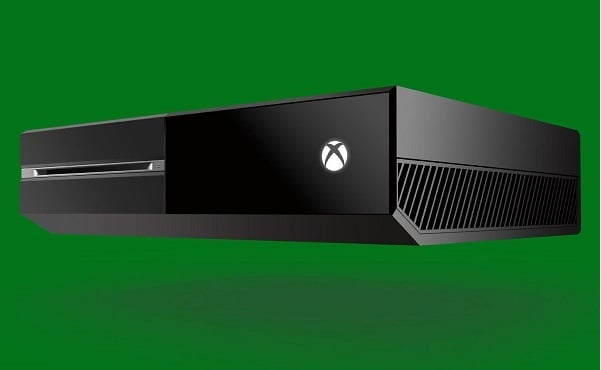
On Tuesday, May 13, Microsoft revealed plans to sell the Xbox One without Kinect at a $400 price point as early as June 9 of this year. Coming down from $500, this places Microsoft’s latest platform at the same console cost as Sony’s Playstation 4. According to MS, the decision comes from user feedback. Phil Spencer, the head of Xbox at Microsoft still claims, “Kinect remains an important part of our vision,” stating that the Kinect is “an important differentiator” for the One.
While this move is contrary to the statement MS made in February, it hardly seems to matter if it is going to help sales and potentially even console performance. As Digital Foundry has found and can prove, ten percent of the Xbox One’s graphic capabilities are kept on reserve for the Kinect and other apps. With Kinect functionality now optional, that reserve can potentially be distributed throughout the consoles other functions, hopefully granting developers the ability to overcome the hurdle of reaching a 1080p resolution, as games on Sony’s platform regularly do.
Microsoft is further seeking to match Sony in terms of offering free streaming apps to all users instead of keeping them exclusively for Xbox Live Gold members. Keeping Netflix and every other streaming device free to use for all console owners has been a standard with Sony for years. The Xbox One will also now deliver Games with Gold, already available on the Xbox 360. Games with Gold is a service for Gold members that gives players free games each month. This program seems to be in direct response to Sony’s Playstation Plus program, which is the same idea but on a larger scale and from a more expansive library, given Sony’s history.
Eliminating the necessity of an “important differentiator,” and making the effort to match services between consoles raises an intriguing question: is the gaming competition boring and overly predictable? This is an extreme conclusion, but seems more or less accurate when asked in tandem with what separates the Xbox One from the PS4? With the potential for the One to match the PS4 in resolution, the new price, similar deals, and extremely similar hardware in general, not much. The truest separation, then, remains in each console’s exclusive software library.
It’s interesting to note, then, that the top selling game on both the Xbox One and the PS4 is the same game, Call of Duty: Ghosts, as Activision revealed in their first quarter sales report. Almost as intriguing is the fact that Ghosts isn’t even exclusive to the latest generation of consoles. That, in conjunction with the fact that the Xbox One now behaves more similarly to the 360 in that Kinect is no longer required begs the question of whether the industry is overly predictable.

By far the largest “differentiator” for the One was its Kinect and Kinect functionality. The ability to seamlessly jump from playing a game to watching TV by simply using one’s voice amongst hundreds of other features could be revolutionary not only for the gaming industry, but electronics in general. Yusuf Mehdi, the man behind Xbox’s marketing, had a lot to say concerning this in an interview with Forbes. He defends the Xbox One being bundled with the Kinect stating, “In the beginning of a new console generation, you’re trying to set the bar for a new experience, and I think we did that with the Xbox One.” He then remarks that the evidence is in the usage of the Kinect, claiming that eighty percent of One owners apparently use it regularly. In terms of technology, he continues, “you should take a five year vision. I think in five years, we will laugh at any computing device you can’t walk up to and talk to.” So what does it mean when Microsoft doesn’t stick to their initial vision declared last year at E3, or even their heavily revised goal from February?
It means the industry under-emphasizes innovation in favor of raw, predictable power upgrades. While there is significant disparity between the internal processing and potential between the Xbox 360 and PS3 of last generation and the Xbox One and PS4, is the difference between the end of last gen 720p standard and the sought after 1080p standard now substantial enough to disregard that “new experience?” My concern is that in emphasizing power over novel experience we are left with a current generation that is nothing but a glorified version of our previous platforms.
IGN‘s Colin Moriarty noted briefly just recently that “Sony accepted that the PS4 should essentially be modeled after Xbox 360, not PS3.” Should a company be satisfied modeling a new generation of consoles after the previous generations attempts over Mehdi’s model of looking five years in to the future? Probably not. That results in glorified 360s with a couple of new features, more space, and more power that almost could have been released as a new model. The result is, in essence, a rehash and not a re-conceptualization of a rapidly expanding industry. There is no revolution and no evolution, and bigger and more powerful does not necessitate being better. It remains disconcerting then that Microsoft retracted from its initial vision last year, reverting in to comfortable expectation because that is what everyone already knew and liked, leaving it looking remarkably similar to the competition as well as the Xbox 360.
As banal as it sounds, the bigger the risk, the bigger the reward. What remains to be seen is whether the low risk console launches will result in more reward or end in making stagnant an industry that has prided itself in continually pushing forward.

